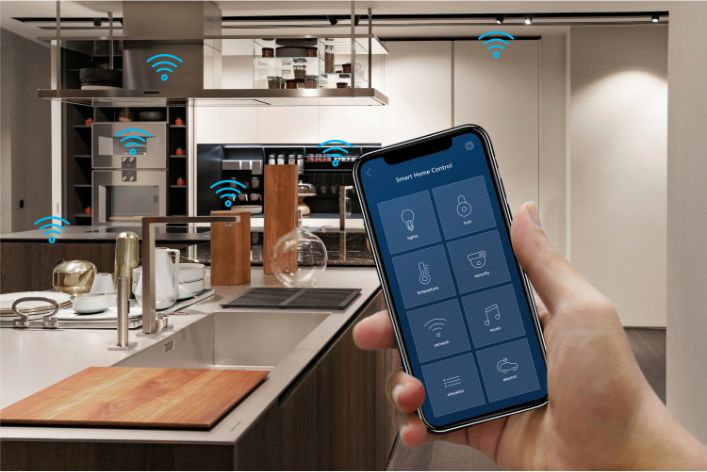The Internet of Things (IoT) refers to a network of devices that are connected to the Internet and can communicate with each other. Smart devices, such as smartphones, wearables, and home automation systems, fall under the IoT umbrella.
Programming for IoT and smart devices is essential in order to develop applications that can interact with these devices. This is becoming increasingly important as more and more devices become connected to the internet, and businesses seek to take advantage of the opportunities available in this emerging field.

Learning how to program for IoT and smart devices is important because it allows you to take advantage of the opportunities presented by this technology. By developing applications that can interact with these devices, you can create innovative solutions that can improve people’s lives.
There are many benefits to learning how to program for IoT and smart devices. For one, it can help you to stay ahead of the curve in terms of technology trends. Additionally, it can open up new job opportunities and allow you to work on exciting projects. Finally, it can help you to develop the skills you need to create innovative solutions that can make a real difference in people’s lives.
Read: Coding 101: Kickstart Your Programming Journey
Understanding the Basics of Programming Languages
When it comes to programming for IoT and smart devices, it is crucial to have a solid understanding of programming languages. Here are some important aspects to consider:
A. Importance of Understanding Programming Languages
- Programming languages are the building blocks of software development for IoT and smart devices.
- Without programming languages, it would be impossible to create the complex software that powers these devices.
- Understanding programming languages allows developers to create efficient and effective software that meets the needs of the end users.
B. Common Programming Languages for IoT and Smart Devices
- Java: Java is a popular programming language for IoT and smart devices because of its portability and security features.
- Python: Python is another popular language due to its simplicity and ease of use, making it ideal for beginners.
- C++: C++ is often used in embedded systems and is known for its efficiency and low-level programming features.
- JavaScript: JavaScript is commonly used for programming IoT devices that operate in web environments.
C. Comparison of Programming Languages: Java, Python, C++, and JavaScript
- Java: Java is an object-oriented programming language that is popular in the development of IoT devices. Its platform independence allows it to work on a wide range of devices, and its built-in security features make it a secure choice for IoT services. Moreover, Java is used to develop a variety of IoT applications such as smart home devices, smart cities, and smart energy.
- Python: Python is a high-level programming language that has become very popular among developers in the IoT industry. One key advantage of Python is that it is easy to learn and use, which makes it a popular choice for beginners. Python is used in a variety of IoT devices such as smart sensors, smart home devices, and connected devices for wearables.
- C++: C++ is a low-level programming language used in the development of embedded systems. It is known for its efficiency and compatibility with low-level hardware, making it a popular choice for IoT devices with limited computing power. Some examples of IoT devices developed using C++ include smart cities, smart agriculture, and smart energy systems.
- JavaScript: JavaScript is a popular language used in web-based IoT applications because of its versatility and ability to interact with web pages. Some of the IoT devices developed using JavaScript include smart thermostats, smart doorbells, and smart lighting systems.
The choice of programming language ultimately depends on the specific needs of the IoT application. Developers should consider factors such as the level of security needed, the target hardware, and the level of complexity required for the software.
Read: iOS vs. Android: Which is Better for Mobile App Development?
Setting Up Your Environment for IoT Development
Before you start programming for IoT and smart devices, there are several things you need to set up. This includes both software and hardware requirements, as well as choosing the right programming tools. You will also need to prepare your development board and sensors.
A. Introduction to software and hardware required for IoT and smart devices
- Hardware: IoT devices like Raspberry Pi, Arduino, and Intel Edison are commonly used.
- Sensors: Depending on the project, you may need sensors for temperature, humidity, light, and motion.
- Software: An operating system like Linux or Windows IoT Core is needed for the development board.
- Communication Protocols: You will need to understand different communication protocols like MQTT or Bluetooth.
- Cloud Services: To collect and analyze data from your IoT devices, you may use cloud platforms such as Amazon Web Services or Azure.
B. Choosing programming tools
- Arduino IDE: A simple and easy-to-use interface for beginners.
- Python: A popular language with vast libraries for data analysis and visualization.
- C++: Low-level language with high-performance capabilities for embedded devices.
- JavaScript: Useful for web-based and cloud IoT applications.
C. Preparing development board and sensors
- Connect your development board to your computer using a USB cable.
- Install the necessary drivers for the board on your computer.
- Install the software required for programming on your development board.
- Connect your sensors to the development board according to their specifications.
- Test your board and sensors to ensure they are working correctly before beginning to program.
After completing these steps, you are ready to start programming for IoT and smart devices. It is important to note that each IoT project has different hardware requirements and may require specific programming tools. However, these steps will provide you with the base knowledge needed to begin your IoT development journey.
Setting up your environment for IoT development requires attention to detail and a clear understanding of the hardware and software required for your project. With the right tools and preparation, you can create successful IoT projects that make a positive impact on your home or business.
Read: How Did Others Go From Zero to Coding Hero?
Learning the Fundamentals of IoT Programming
A. Understanding IoT hardware architecture
IoT programming involves the use of hardware that consists of devices such as sensors, actuators, and microcontrollers. Each device is designed to perform a specific function and has different requirements in terms of memory and power consumption.
To create functional IoT devices, programmers must understand the hardware architecture of each device, how they function as well as how they connect to each other.
B. Basic concepts of programming for IoT and smart devices
IoT programming involves creating software that allows the connected devices to communicate with each other. It is essential to understand basic programming concepts such as loops, conditional statements, and data structures such as arrays and linked lists.
Innovative Tech Solutions, Tailored for You
Our leading tech firm crafts custom software, web & mobile apps, designed with your unique needs in mind. Elevate your business with cutting-edge solutions no one else can offer.
Start NowAdditionally, IoT programming involves developing applications that interact with the physical world and respond to dynamic changes in their environment.
C. Data types and variables for IoT development
IoT programming languages include C, Python, Java, and JavaScript, among others. Each language has its unique syntax and data types. Programmers must know how to work with variables and datatypes such as integers, floats, and strings.
Moreover, IoT devices require data to be collected at different rates and stored in specific formats. Therefore, it is crucial to understand data serialization techniques that enable data to be translated into a format that can easily be processed by other devices. Examples of serialization techniques include JSON, XML, and Protocol Buffers.
D. Programming for IoT security
IoT devices collect a vast amount of data, which often includes sensitive and personal information.
Programmers must ensure that their IoT applications and devices are secure by incorporating secure coding practices such as input validation, access controls, and encryption.
Additionally, IoT communication should be encrypted to protect the privacy of users. Programmers should also ensure that their devices are updated regularly with security patches and are not vulnerable to known security exploits.
E. Use of frameworks and libraries for IoT programming
Frameworks and libraries can streamline the IoT development process and speed up application development. Some popular IoT frameworks include AWS IoT, Microsoft Azure IoT, and IBM Watson IoT. These platforms allow developers to easily connect their devices to the cloud and integrate with other services.
Furthermore, IoT-specific libraries can simplify the implementation of specific tasks such as communication protocols, data storage, and device management.
F. Testing and debugging IoT applications
IoT devices require rigorous testing and debugging to ensure they function as intended and are secure.
Test cases should include edge case scenarios to ensure the device will operate correctly under extreme conditions.
Additionally, programmers should have a debugging strategy in place for identifying and fixing errors. It involves monitoring device logs, using debugging tools such as break-points, and code reviews.
Programming for IoT and smart devices requires an understanding of the hardware architecture, basic programming concepts, data types, security, and testing. IoT frameworks and libraries can help streamline the development process and speed up application development. By incorporating secure coding practices and conducting rigorous testing, programmers can create functional and secure IoT applications and devices that meet user needs.
Read: What are the Core Concepts of Algorithms & Data Structures?

Programming for IoT and Smart Devices
In order to start programming for IoT and smart devices, there are a few important steps to follow. These steps include building a custom program, writing code for IoT using Python, and programming the IoT device on the Internet.
A. Building a custom program
- Identify the purpose of the IoT device and what you want it to accomplish.
- Create a list of features needed to achieve the desired outcome.
- Choose the hardware and software that will meet the requirements.
- Develop a plan and design for the project.
- Establish a way to communicate with the device.
- Choose a programming language that is compatible with the device.
- Write the program and test it out.
B. Writing code for IoT using Python
- Python is a popular programming language for IoT devices because it is easy to read and write.
- Install the Python interpreter on your device and choose an IDE.
- Learn the basics of Python, including variables, loops, and functions.
- Understand the unique features of programming for IoT, such as using sensors and actuators.
- Use libraries and modules to simplify the programming process.
- Test the code on your device and troubleshoot any issues.
- Refine the code for maximum efficiency and functionality.
C. Programming the IoT device on the Internet
- IoT devices can be programmed remotely using the internet.
- Choose a platform for remote programming, such as AWS IoT or Microsoft Azure IoT.
- Connect the device to the platform and establish the necessary security protocols.
- Use the platform’s tools to manage and monitor the device’s performance.
- Create custom dashboards and visualizations to display data from the device.
- Implement updates and modifications to the device’s programming as needed.
Programming for IoT and smart devices requires careful planning, knowledge of programming languages and IoT devices, and the ability to troubleshoot and refine code. With these steps in mind, developers can create innovative and useful projects that take advantage of the capabilities of IoT technology.
Read: How to Learn Object-Oriented Programming Quickly
Testing Your Program
A. Importance of testing in IoT development
Testing is crucial in IoT development as it ensures that the program functions as expected.
IoT devices are often used for critical purposes, such as in medical equipment and infrastructure, so even a small error can have catastrophic consequences. Testing helps avoid such scenarios by identifying and fixing errors before deployment.
B. Overview of different testing methods
There are several testing methods that IoT developers can use, including unit testing, integration testing, end-to-end testing, and acceptance testing.
- Unit testing involves testing individual components of the program, such as functions, classes, and modules, to ensure that they work as intended.
- Integration testing involves testing the interaction between different components to ensure that they work together.
- End-to-end testing involves testing the entire IoT system to ensure that it works as expected.
- Acceptance testing involves testing the system with real-world scenarios to ensure that it meets the customer’s requirements.
C. Tips for troubleshooting and debugging IoT programs
Troubleshooting and debugging are essential parts of IoT development, as they help identify and fix errors in the program.
Some tips for troubleshooting and debugging IoT programs include:
- Use debugging tools: Debugging tools such as log analyzers, memory analyzers, and network analyzers can help identify errors in the program.
- Test with different scenarios: Test the IoT system with different scenarios to identify errors that might not be apparent in controlled environments.
- Emulate network conditions: Emulate network conditions such as low bandwidth and high latency to test the IoT system’s performance under different network conditions.
- Use simulations: Using simulations can help simulate real-world scenarios and identify errors in the IoT system.
- Write clean code: Writing clean code with proper documentation, naming conventions, and comments can help simplify debugging and troubleshooting.
Read: What Are HTML, CSS & JavaScript in Web Development?
Conclusion
In this article, we have discussed the fundamentals of programming for IoT and smart devices. We have touched on the importance of understanding hardware and software interactions, as well as choosing the right programming language and platform. It is crucial to have a clear understanding of the final user experience when creating IoT applications.
As technology advances, IoT is becoming more prevalent in everyday life. In the future, IoT programming will undoubtedly continue to grow, and with it, the demand for IoT developers. In addition to creating applications, IoT programmers will need to ensure their projects adhere to security protocols and remain compatible with new technology.
For those interested in further learning, we recommend continuing to expand your knowledge of programming languages and platforms, as well as exploring the realm of hardware development. Staying up to date with the evolution of IoT technology will help you stay ahead in this booming industry.
In a nutshell, programming for IoT and smart devices requires a unique combination of hardware and software knowledge, as well as an understanding of user experience. By following the best practices outlined in this article and staying up to date with evolving technology, you can become a successful IoT programmer.
Seamless API Connectivity for Next-Level Integration
Unlock limitless possibilities by connecting your systems with a custom API built to perform flawlessly. Stand apart with our solutions that others simply can’t offer.
Get StartedRead: How to Understand Programming Jargon for Newbies
Before You Go…
Hey, thank you for reading this blog to the end. I hope it was helpful. Let me tell you a little bit about Nicholas Idoko Technologies. We help businesses and companies build an online presence by developing web, mobile, desktop, and blockchain applications.
We also help aspiring software developers and programmers learn the skills they need to have a successful career. Take your first step to becoming a programming boss by joining our Learn To Code academy today!
Be sure to contact us if you need more information or have any questions! We are readily available.











